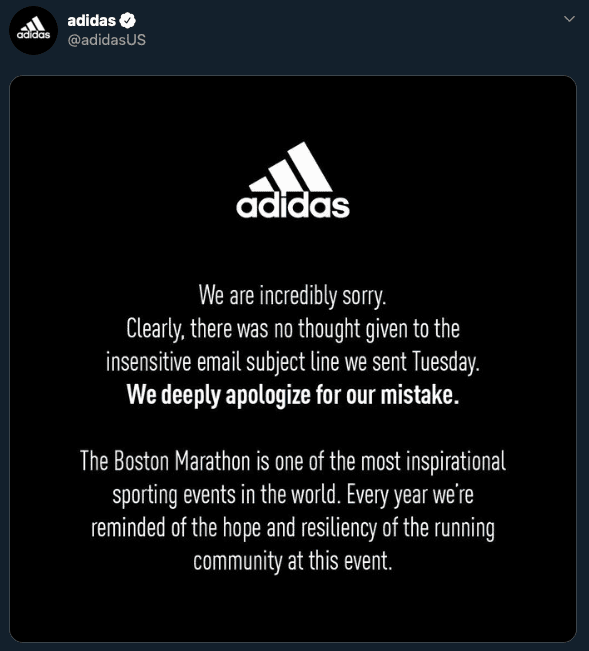It is always better to learn from someone else’s mistakes than your own. Fortunately, for new businesses, there are plenty of failures to learn from. Crisis management is a core part of a successful PR strategy. However, some of the world’s biggest companies have fallen short when it comes to damage control.
Below, we’re going to take a look at some of the most significant PR fails of the past decade. Not only can we see how mistakes were made, but also how poor PR strategy made these errors worse.
The Domino’s pizza YouTube scandal

Back in 2009, two rogue Domino’s employees decided to upload a disturbing scene to the world’s most popular video streaming site. The clip showed the pair preparing a customer’s order in disgusting ways. In the age of the internet, it wasn’t long before social media turned the clip viral. But, how did Domino’s react?
The answer is – not quickly enough. Top-tier executives formed a response team but delayed addressing the crisis to avoid drawing attention to it. It took two days for Domino’s to issue an apology. By this point, more than a million viewers had seen the disastrous video online.
In the company’s defence, there wasn’t a lot they could have done to predict the initial crisis. Additionally, their reaction was textbook PR crisis management. They launched a Twitter account, apologised, closed the store in which the video was made, and addressed the issue on YouTube.
It only took a few hours after the video was uploaded for Domino’s reputation to take a hit. The lesson here is that waiting to react almost always backfires. Don’t hold off on crisis management, the sooner you act, the better.
The BP oil spill
In 2010, there was a devastating explosion at the Deepwater Horizon oil rig. Eleven workers died, and gas and oil poured into the Gulf of Mexico for nearly three months. BP was ultimately held responsible for “the worst environmental disaster of all time”. If that wasn’t bad enough, the company’s public response made matters much worse.


BP CEO, Tony Hayward, made one mistake after another in his response to the crisis. Firstly, he attempted to downplay the severity of the situation by “putting it into context.” He claimed the spill was “relatively tiny” compared to the “very big ocean.” Not a great way to respond to the biggest oil spill in history, but he wasn’t done yet.
Hayward showed a clear lack of empathy when he told journalists, “I would like my life back,” in reference to the toll it was taking on his personal life. In the ensuing days, the floundering CEO came under fire for taking a sailing trip amid the chaos. The cherry on top was the infamous apology video.
BP released a one-minute apology featuring Haywood saying, “I’m sorry.” You know you’ve messed up when South Park spends an entire episode mocking your PR response video.
The lesson here is that if you make a mistake, you must take full responsibility for your actions. Take ownership and demonstrate you’re well organised and motivated to make things right. And don’t fish for personal sympathy.
We explore some of the most common PR mistakes and how to avoid them.
Adidas’ poorly-worded email
Adidas is one of the most well-known sponsors of the Boston Marathon. In 2017, the company decided to send a congratulatory post-race email to its participants. The headline of the email read, “Congrats, you survived the Boston Marathon!” If this were any other race, this wording wouldn’t be a problem.
However, most people remember the tragedy that occurred during the 2013 Boston Marathon. Two extremist brothers detonated a pair of homemade bombs, killing three people and injuring hundreds. Recipients of the email immediately took to the internet to draw attention to Adidas’ unbelievable oversight.
To their credit, Adidas reacted promptly and effectively. The company apologised and owned up to their mistake. The question on most people’s minds was, “How on earth did this get past the marketing team?”


Mistakes happen, but you need to think carefully about everything you post. Before you share content, try and read it from every perspective. An additional pair of eyes never hurts either.
We discuss the role of PR ethics in reputation management.
United Airlines “re-accommodates” a passenger
United Airlines is no stranger to PR fails. In 2017, however, they outdid themselves. The company had overbooked a flight – a regular occurrence in the industry. When an elderly doctor refused to leave the plane, United handled the situation disastrously. They called in security who brutally dragged the man from the aircraft. Obviously, many onlookers captured the whole event on their phones.
Then, United made matters worse. The airline’s CEO, Oscar Munoz, missed the mark completely with his apology. He said the company was sorry for “having to re-accommodate” customers. So, instead of apologizing for the assault of a passenger, he tried to make the issue about overbooking.
Like BP’s CEO, Munoz lacklustre response to the incident only made the company look callous and uncaring. Had he taken responsibility for their actions, the outcome would have been better for United. In fact, the whole situation could have been avoided if staff had been better trained.
What we’ve learned from these PR fails
The key takeaways from these PR fails are that speed and sincerity are crucial. If something goes wrong, don’t wait for it to gain traction organically. Get out there, take responsibility, apologise sincerely, and make amends. If you delay, you’ll appear untrustworthy. It’s also worth paying attention to any high-profile mishaps in the news. Ask yourself, did the company handle the situation well? If they didn’t, what mistakes did they make, and how would you have done things differently?
If you’re curious to learn more about public relations or want to speak to a SYNC consultant about starting your brand’s PR journey, contact us at [email protected]

